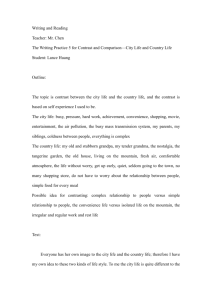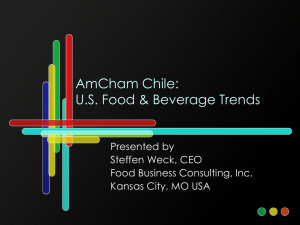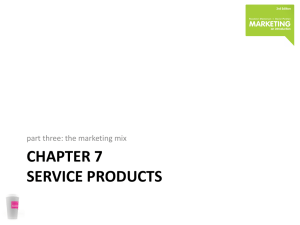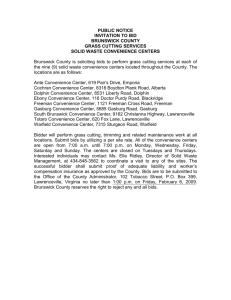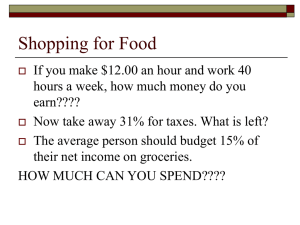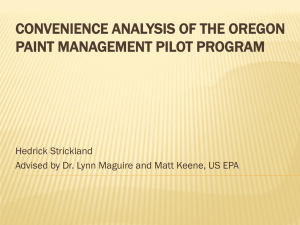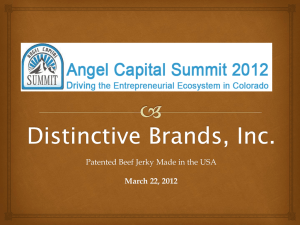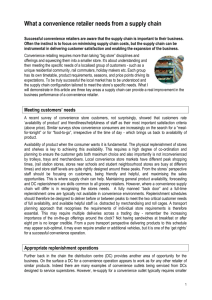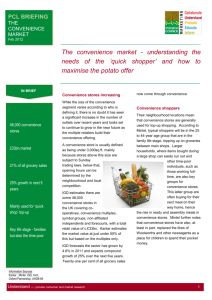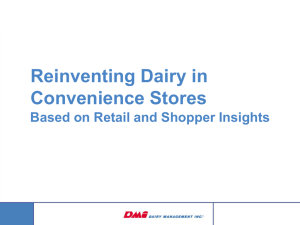Dr. Pepper Snapple Group – Energy Beverages MBA 630 Marketing
advertisement
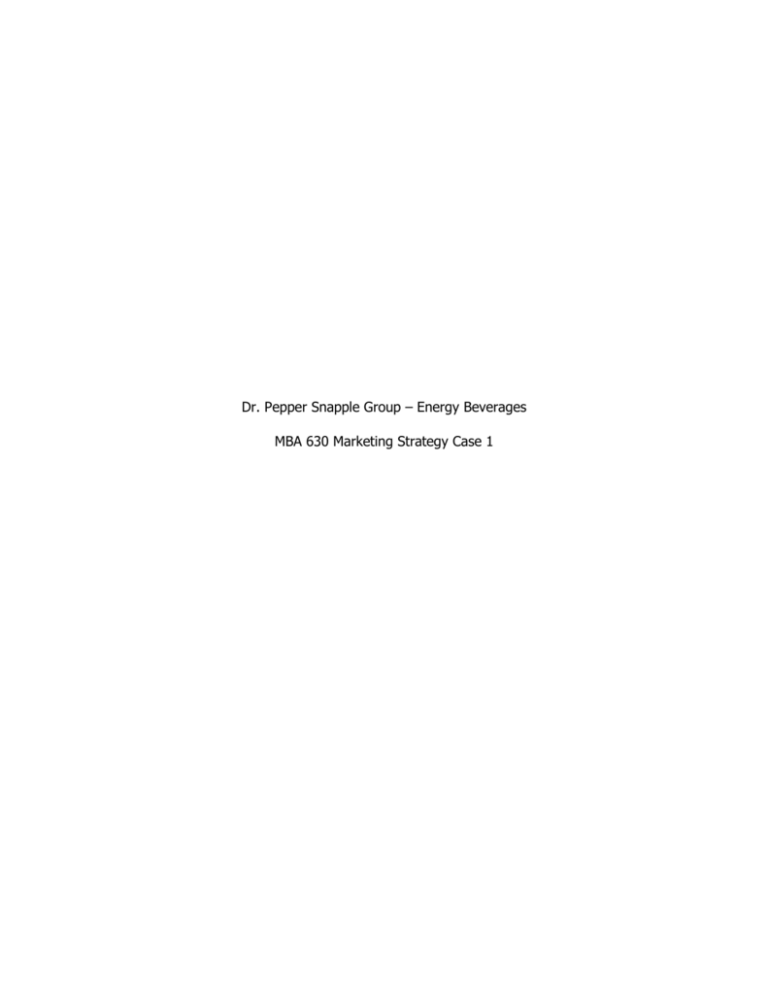
Dr. Pepper Snapple Group – Energy Beverages MBA 630 Marketing Strategy Case 1 It is believed that bottlers and distributors will only produce and stock 2 SKU's of a new energy drink. Given there are 24 possible combinations of packaging (2: single-serve, multi-pack), package sizes (3: 8, 16,24), versions (2: regular, sugar free), flavors (2: one, two). Discuss which 2 combinations should be selected and through which channels should they be distributed? SKU 1: Single-serve, 16 oz, Regular, One Flavor SKU 2 Single-serve, 16 oz, Sugar-free, Same Flavor Packaging: Single-Serve. This will allow us to sell in convenience stores, the largest channel by sales percentage. By selling in convenience stores, our goal to have a product with a high profit margin will be obtainable. Single-serve products and convenience stores yield the highestprofit. Package size: 16 oz. This is the fastest growing packing size of energy drinks, and accounts for 50% of convenience store sales. More research should be conducted to find if the 16.9 oz. aluminum with resealable screw cap is an option the market finds attractive, as this feature can differentiate our product. Versions: Regular and Sugar-free. Choosing this will allow us to target both the 80% of the market that prefer regular and the 20% that prefer sugar-free. Flavors: One flavor because there are several energy drink beverages already on the market. We believe it is better to have one strong initial offering which can lead to the expansion of flavors after the initial version obtains ground in the market. Channel: We want to launch our brand in convenience stores, as this has the highest share of market sales with 52.5%* of total market coverage. We will be able to reach the largest amount of consumers through them, while remaining consistent with the company objective to be in high profit areas. Our offering of two SKUs is consistent with the limited product lines convenience stores want to sell. Selecting one channel for launch will also help advertising and promotion costs. Eventually we would like to expand into supermarkets and mass merchandisers once the product is established, as well as possibly implement additional SKUs. *Calculation- .71 portion of total sales in off premise x .74 portion of off-premise in convenience store sales = .525 total portion of convenience store sales What 'ballpark' dollar amount for media advertising and promotion should be budgeted for a new energy beverage brand and why do you believe this is an appropriate amount? Knowing that we don’t have the budget to match Red Bull’s media plan, while understanding that significant money needs to be spend on the launch of the product to increase awareness, we used Hanson as a benchmark to make our budget decisions. Hanson's Monster Energy is an appropriate competitor to pick, because they target the same demographic and have the same package size we plan to launch. Media Advertising = $ 308,000 This is based on doubling Hanson’s planned media expense for 2007. This will give us approximately two impressions for every one Monster impression. Promotion = $1.23 million Keeping with the industry standard we plan that our promotion expenditures will be four times greater than our media budget. Total: $1.54 million To break even with this level of advertising and promotion expenditures we will need to sell 203,849 cases. Total sales Selling price/unit oz/unit 16 total oz oz/case $9,340,000 4,670,000 74,720,000 288 Total cases 259,444 Total profit $1,960,000 Profit/case $7.55 Adv & promotion Breakeven (cases) $1,540,000 203,849 Discuss what suggested retail price should be recommended for a new energy beverage brand? We are entering a mature market with loyal customers, and do not have the ability to position ourselves against the premium brand, Red Bull. As a result we plan to implement a competitive value pricing strategy with a retail selling price below Monster, Rockstar, Full Throttle, and AMP Energy. Based on the average retail selling price per case given for these companies, we estimated their selling price to be between $2.11 and $2.16. Therefore, we plan to see our product for $2.00, or $.125/oz. Calculations: Monster/AMP Energy $39/case / 288oz/case = $.135/oz or $2.16 for 16 oz Rockstar/Full Throttle $38/case / 288oz/case = $.131oz or $2.11 for 16 oz Discuss what would be a reasonable first-year sales forecast for a new energy beverage brand based upon your recommended target market and marketing mix? 153 million (sales in 2006) x 1.105 (growth in 2007) x 1.105 (growth in 2008) x .7 (% of males that are users) x .71 (% of off premise sales) x .74 (% of off premise sales that are convenience store sales) x .5 (% of convenience store sales that are 16 oz) x 1 ( 80% of regular and 20% sugar-free) x .7 (DPSG coverage) = $24 million chain ratio projected sales 153 million (sales in 2006) x 1.105 (growth in 2007) x 1.105 (growth in 2008 = $186 million total market sales in 2008 $24 million project sales/$186 million total sales = 12.8% of the market $186 million x 5% (expected DPSG market share) = $9.34 million in sales Using the chain ratio method, we determined sales forecast of $24 million. As a market share, that represents almost 13%, which we feel is unreasonable to obtain with a new product in its first year. We are optimistic that we can obtain 5%, knowing that Tab was able to obtain a 2.5% share targeting only women. Capturing 5% of the market would result in sales of $9.34 million. Projected profit for this sales level would be the wholesaler’s margin in addition to the gross profit, a total of $3.36 million. Total Retail to Consumers 50% margin to convenience stores To wholesalers 30% margin to wholesalers Factory sales COGS Gross profit *In millions of dollars $ 9.34 $ (4.67) $ 4.67 $ (1.40) $ 3.27 $ (1.31) $ 1.96
